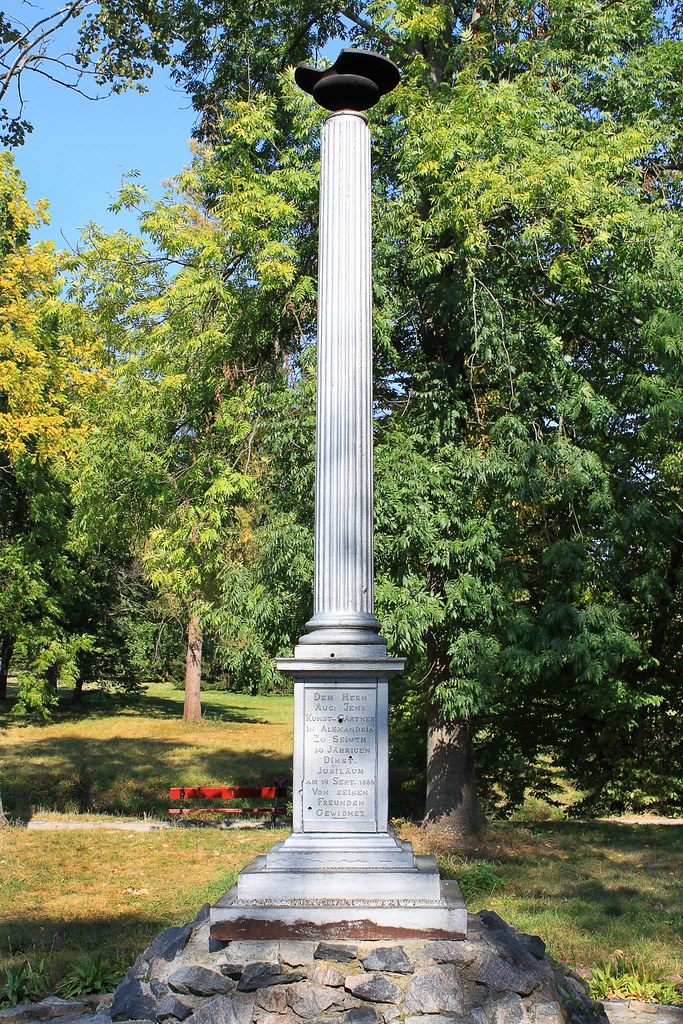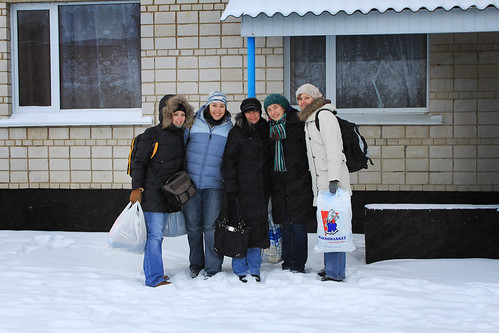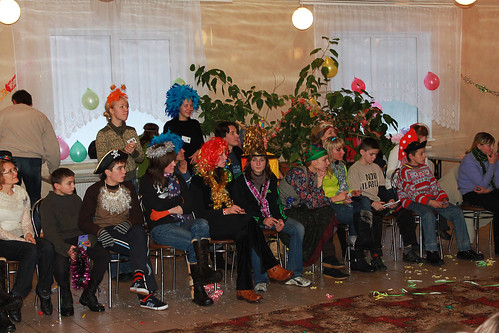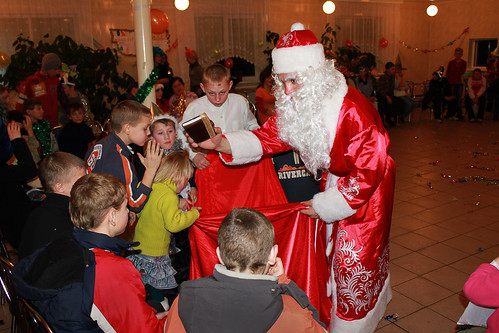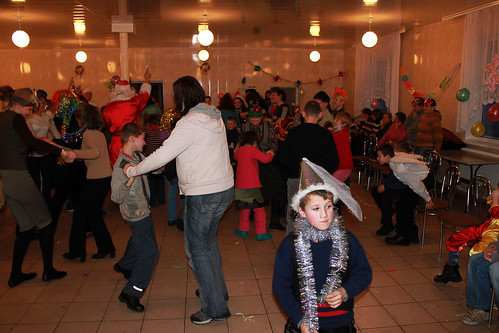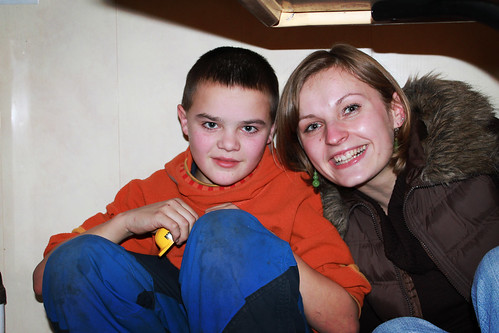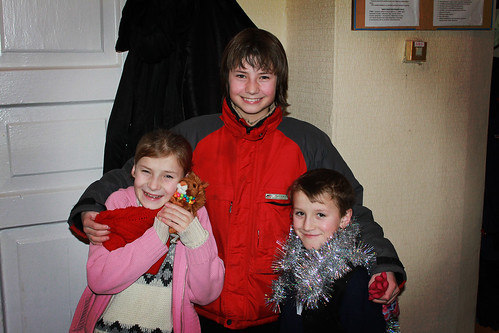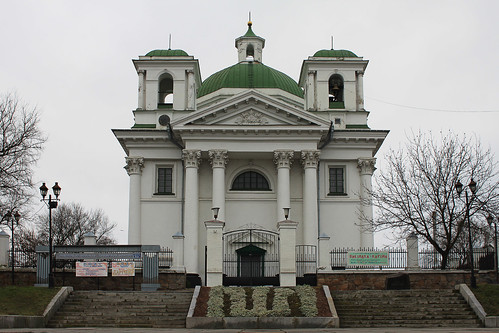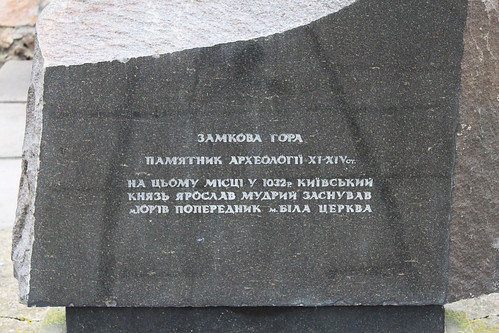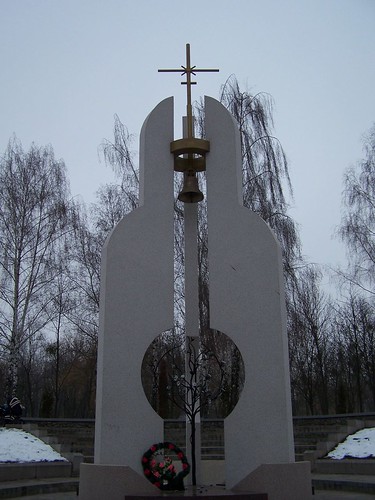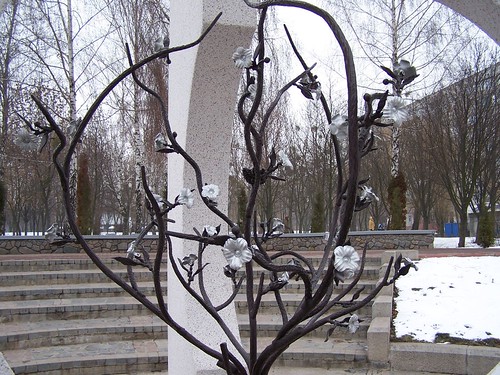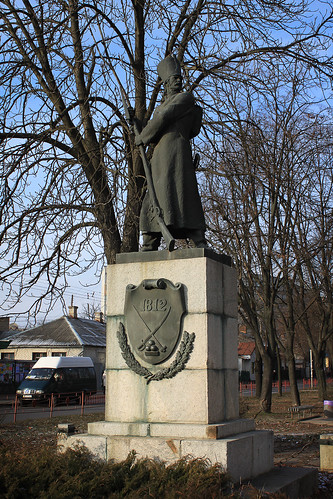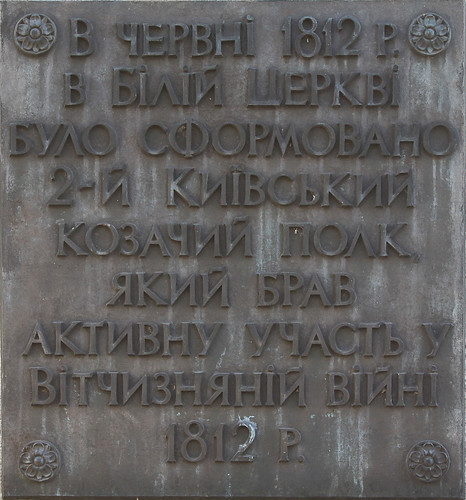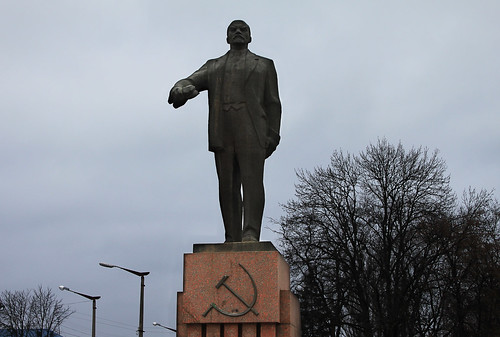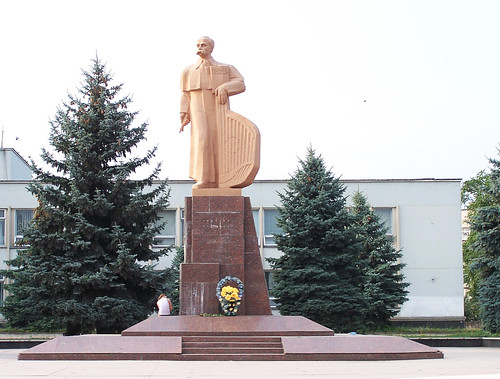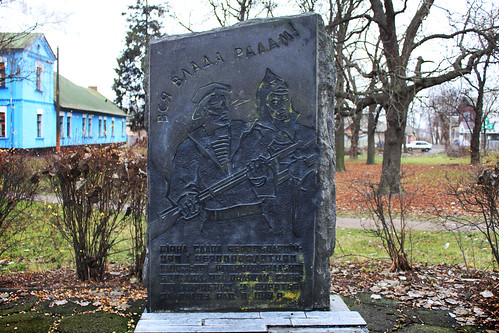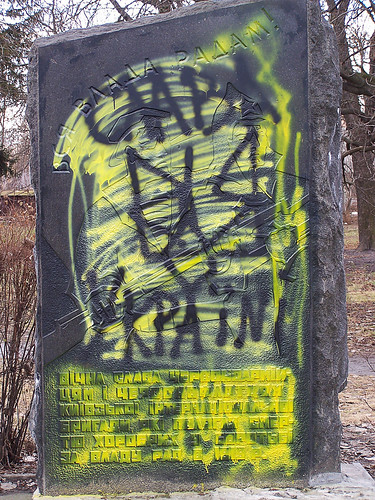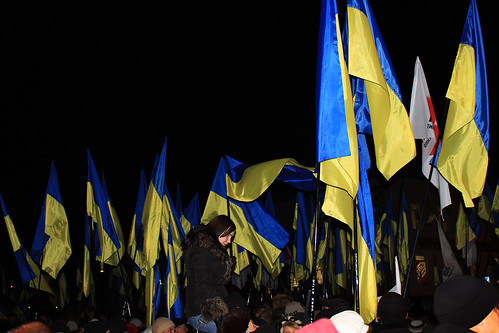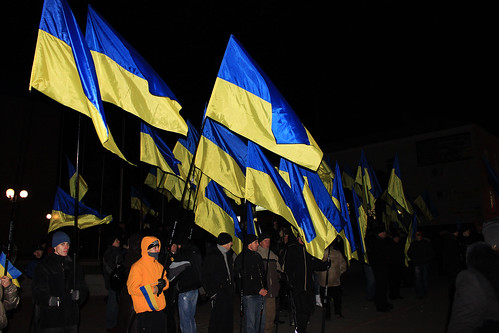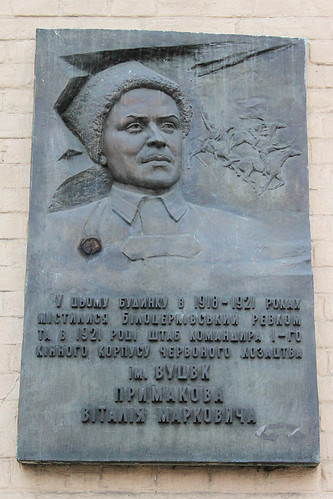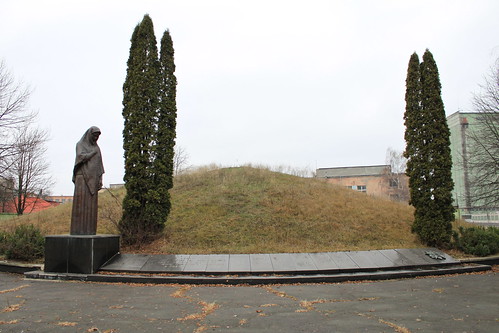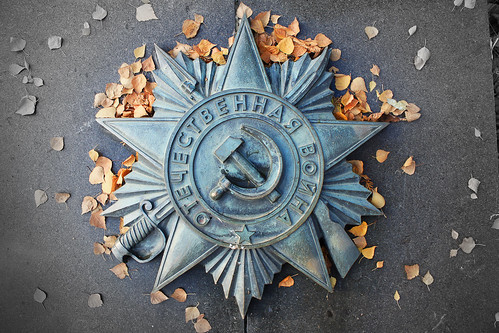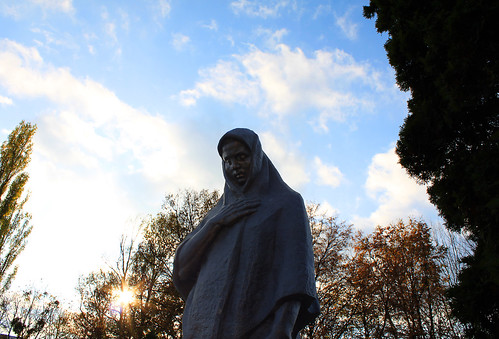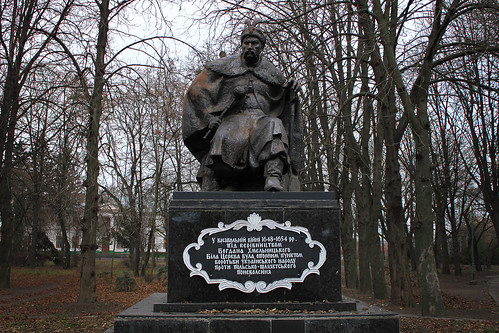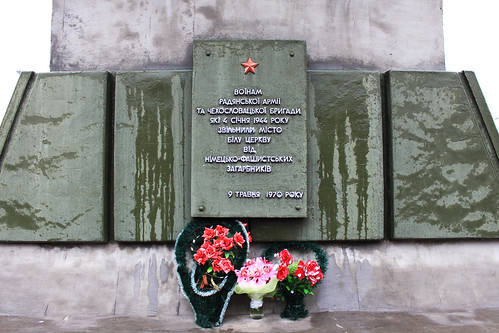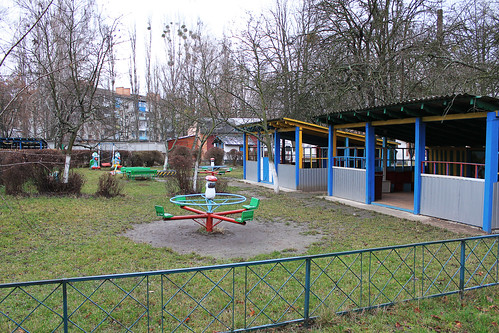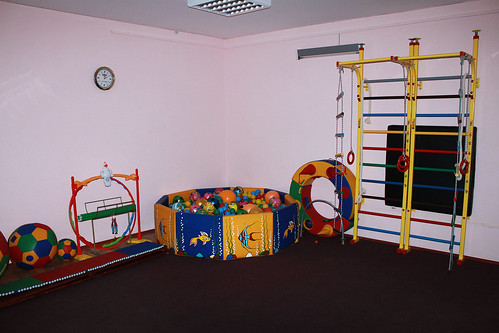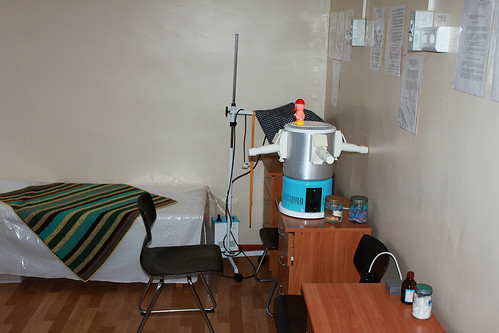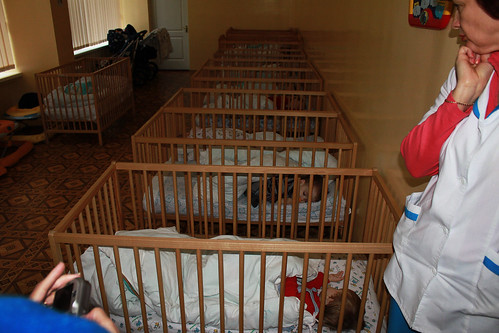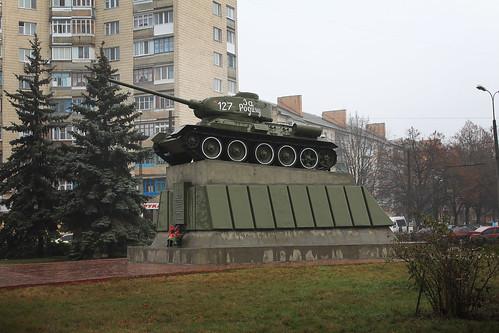 This Soviet T-34 tank commemorates the liberation of Bila Tserkva from the Germans
This Soviet T-34 tank commemorates the liberation of Bila Tserkva from the Germans Memorials made from obsolete military equipment are common across Ukraine, but this one is in memory of the tank battle that led to the liberation of Bila Tserkva. A plaque on the nearby post office is in remembrance of 23 year old Lieutenant Commander Konstanyn Mykhailovych Turchanynov who was killed in his
T-34 tank during the battle for the city. The side of the tank reads, "For Family".
"To the warriors of the Soviet Army and Czechoslovakian brigades, that on the 4th of January 1944 liberated the city of Bila Tserkva from the German fascist invaders. -9 May 1970"
This T-34 tank is located at: 49°49'3.73"N 30° 4'10.76"E
On a side note, I thought it was interesting that Bila Tserkva was stripped of vital equipment and Soviet troops quickly retreated when the Germans rolled through. Here is an excerpt from the life of Viktor Nevinchany as told by his daughter, Halyna Nevinchana. It sheds some light on the conditions in Ukraine and a little local history.
"Viktor came back to Ukraine and worked for some time in the town of Bila Tserkva, dreaming of a career of an architect. In June 1941, Nazi Germany invaded the Soviet Union and the German forces gained a very considerable initial success — they pushed deep into the soviet territory at an alarming speed. The soviets began to evacuate whole factories and equipment further east, into the Soviet Central Asia and even Siberia, from the cities and towns which were likely to be captured by the invading German forces. In early July, Viktor was appointed to supervise the evacuation of some equipment from Bila Tserkva to the town of Mari in Central Asia. He did what he was required to do. Once, in a private conversation he was asked a provocative question — Why is it that the soviet troops are being beaten by the Germans and are retreating so fast? Viktor bluntly answered that it was because of poor command, low fighting spirit, mismanagement and lack of proper preparations for the imminent war. His words were duly reported to the secret service agents and Viktor was arrested the next day.
He was accused of “anti-soviet propaganda” and “Ukrainian bourgeois nationalism” and sentenced to ten years in a concentration camp. Viktor Nevinchany was moved from camp to camp — from Central Asia he was taken to a camp in the north of the country where he was to cut timber in bitter cold. Viktor Nevinchany proved to be lucky — he was singled out for his qualifications as an engineer and sent to work at the construction of a hydroelectric power station.
His “luck” proved to be not a blessing but a misfortune — though his job was less physically demanding, he had to work side by side with convicted criminals. And he could not hold his tongue in situations when he should have — it cost him another four years in the camps.
Viktor did return to Bila Tserkva in Ukraine after he had done his term in concentration and labor camps. He joined his wife Leya, who had come to live in Bila Tserkva earlier, and, after all, saw his daughter. And then it was my turn to come to this world. My father found work in construction and in 1955 he won a contest for the best design of a hotel in Bila Tserkva, proving it was not only the best architecturally but would be the cheapest to build. The Hotel Kyiv, which was built in 1957, still graces the center of Bila Tserkva. His designs were used for the construction of several other buildings in Bila Tserkva and in Kyiv Oblast."
Hotel Kyiv is located at: 49°47'47.23"N 30° 6'50.35"E
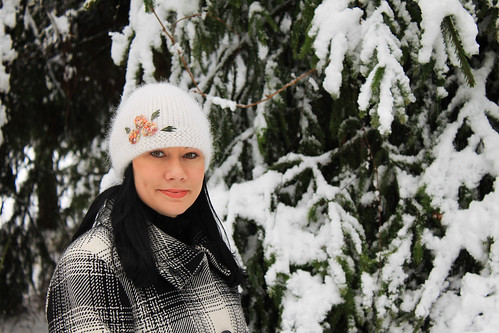

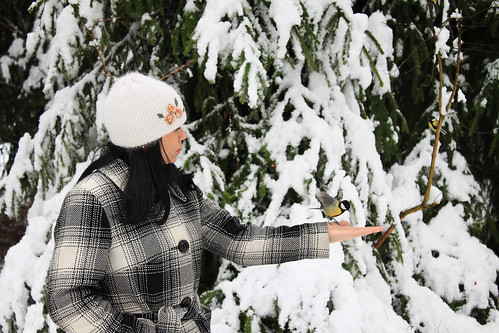
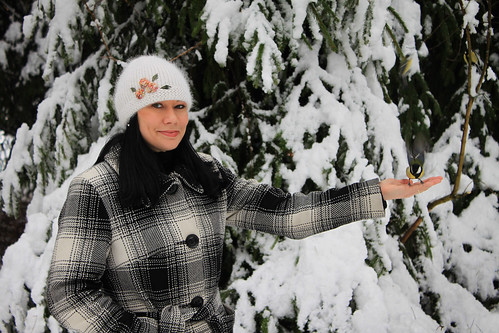

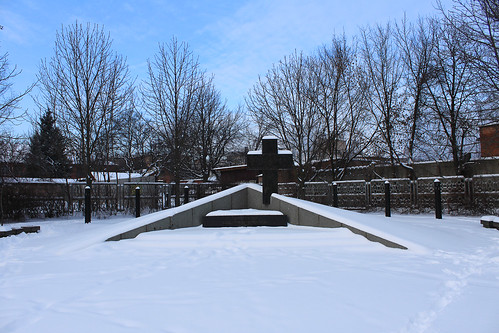

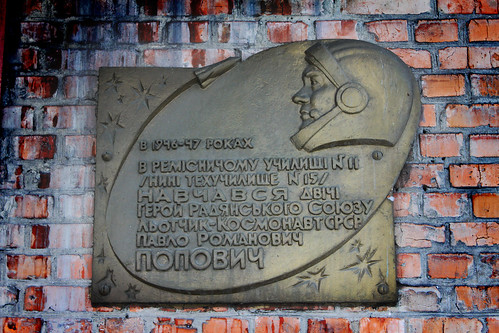
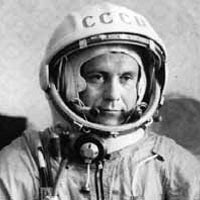.jpg)

